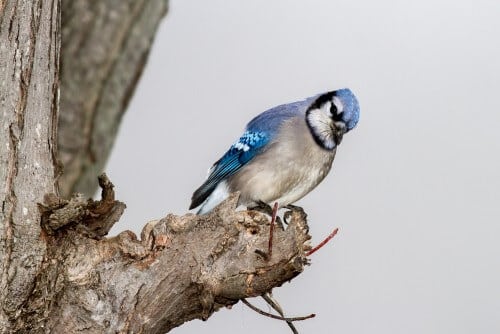Birds make use of particularly sophisticated changes in the structure of their feathers in order to create a multi-colored cover, this with the help of a process that could pave the way for the development of colors and dyes for clothing that will never fade.

[Translation by Dr. Nachmani Moshe]
Birds make use of particularly sophisticated changes in the structure of their feathers in order to create a multi-colored cover, this with the help of a process that could pave the way for the development of colors and dyes for clothing that will never fade.
Researchers from the University of Sheffield used an X-ray method to examine the blue and white feathers of the raven bird, and found that the birds exhibit a surprising level of control and sophistication in creating their feather colors. Instead of using dyes and dyes that may fade over time, the birds use well-controlled changes in nanostructures to create their colorful and iridescent feathers - allowing the birds to recognize one another. The raven is able to match these different colors along the length of an individual feather - an achievement corresponding to the situation where different colors exist along the length of a single human hair. The raven's feather, whose color ranges from violet to blue and white, consists of a spongy keratin material containing nanostructures, the same material (keratin) that makes up human hair and nails.
The researchers found that the raven is able to exhibit incredible control over the size of the nozzles within this spongy structure, and even set them to specific sizes, sizes responsible for the color reflected from the feather. This is in light of the fact that when light hits the feather, the size of these nozzles determines the amount of light that will be scattered out, and therefore the color visible to our eyes. As a result, larger nozzles mean that light is reflected in a wider range of wavelengths, which creates the color white. In contrast, a tiny and more compact structure gives rise to the color blue. If the colors were made from dyes derived from the bird's diet, then the color of the feather would fade over time. However, in light of the fact that nature has developed a way to create the colors with the help of structural changes, each nanostructure will maintain its integrity, a fact that explains why the color of the bird's feathers never fades. In contrast, the color of human hair consists of pigments, which are dyes that fade over time. The research findings were published in the scientific journal Scientific Reports.
One of the researchers explains: "The popular explanation was that the control of light while using materials in this way would require precise and controlled structures at an extremely high level, this together with a large number of different processing steps, however - if nature is able to use such a material for the birds, then we should be able to do the same synthetically as well." The researcher adds: "This discovery means that in the future we will be able to synthetically create colored coatings and other materials that will be stable for a long time. We found exactly how to do this - by changing the size and compression of the nozzles in the sponge-like structures. Existing technologies are not able to create colors with such a high level of control and precision - dyes and dyes are still used in the industry. Now that we have learned how nature does this, we can begin to develop new materials, for example clothes and paints, taking advantage of this approach of small changes in nanostructures. That is, if we make a red shirt using this method, then its color will remain constant and will not fade after multiple washes and washes."

3 תגובות
Herzl
You wrote "round the corners in this area, so that people don't associate that asbestos is also a nanometer structure" - what do you base this aggressive assertion on?
After a second of searching I found - http://www.cdc.gov/niosh/docs/2013-145/pdfs/2013-145.pdf
So why are you attacking without substantiation?
Lorm - simple, nanometer structures that after exactly 12 months disintegrate into carcinogenic dust. But seriously - the corners are rounded in this area, so that people don't associate that asbestos is also a nanometer structure. Research efforts are being invested in the development of products from nanometer materials, but there are no safety studies yet.
This is because the manufacturer does not build on planned obsolescence and repurchase. Now go out and think if there is any chance that any manufacturer will adopt the technology without building other escape routes to accelerated wear and tear and obsolescence.